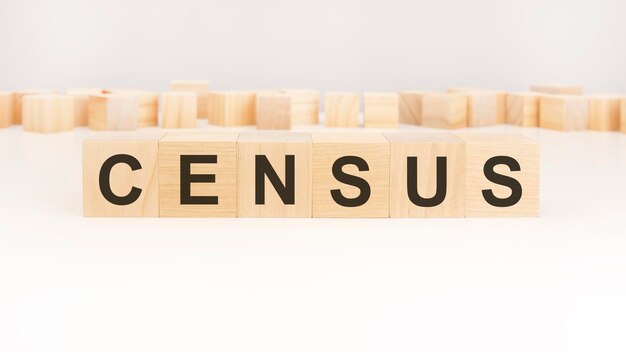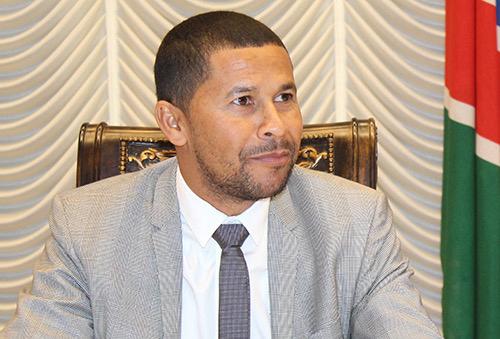Namibia, a country located in the southwestern corner of Africa, is known for its diverse landscapes, rich cultural heritage, and unique biodiversity. With a population of just over 2.5 million people, it is one of the least densely populated countries in the world. However, understanding the demographic, social, and economic changes occurring within Namibia is crucial to both local policymakers and international observers. One of the most valuable tools for gaining insight into these developments is the national census.
A census provides crucial data on the size, distribution, and composition of a population, shedding light on important social and economic trends. The Namibia Census, which is conducted every ten years, offers a snapshot of the country’s growth and changes in various sectors, such as healthcare, education, housing, and employment.
This article provides an in-depth overview of the key census insights from Namibia’s most recent national census. It highlights trends and data that are crucial to understanding the demographic shifts and challenges the country faces, as well as the opportunities for sustainable development.
An Overview of Namibia’s Demographic Landscape
Namibia, despite its vast land area of over 825,000 square kilometers, is sparsely populated, with a population density of about 2.7 people per square kilometer. The population is concentrated mainly in urban areas, such as the capital city of Windhoek, and along the more fertile northern and coastal regions.
Population Size and Growth Rate
According to the most recent census data from 2021, Namibia’s population stands at approximately 2.5 million people. This marks an increase from the 2.1 million recorded in the previous census in 2011. The country has experienced a steady growth rate of about 2.3% per year, reflecting a combination of natural population growth (birth rates) and migration patterns.
While this growth rate is relatively moderate, it poses certain challenges related to the country’s infrastructure, resource management, and provision of public services. The population increase is most evident in urban areas, where many Namibians are migrating in search of better opportunities and a higher standard of living.
Age Demographics: A Young Population
Namibia has a relatively young population, with a median age of around 21 years. Over 40% of the population is under the age of 15, which indicates the high birth rate the country continues to experience. This youth bulge presents both opportunities and challenges for the country’s future.
- Opportunities: A young population can contribute to a dynamic labor force, enhancing productivity and innovation. It also means the country has the potential to build a strong, diverse workforce that could drive the economy forward in sectors such as technology, manufacturing, and tourism.
- Challenges: A young population places significant pressure on educational institutions, healthcare systems, and employment opportunities. It is essential that Namibia invests in skills development, vocational training, and job creation to ensure that its youth do not face high levels of unemployment and underemployment.
Ethnic Composition and Cultural Diversity
Namibia is home to a rich mosaic of ethnic groups, with 11 major ethnic communities making up the majority of the population. The largest group is the Ovambo (about 50%), followed by the Herero, Damara, Nama, Caprivian, and San (Bushmen) communities, among others.
The ethnic composition in Namibia is also reflected in the linguistic diversity, with 11 official languages, including Afrikaans, English, and a range of indigenous languages. English is the official language used in government and education, but Afrikaans serves as a lingua franca for many Namibians, while various indigenous languages like Oshiwambo and Otjiherero are spoken in the home and community settings.
- Key Insight: Namibia’s population is highly diverse, and this diversity is reflected in its cultural practices, languages, and traditions. Understanding these variations is essential for policymakers and businesses aiming to foster inclusivity and unity across the country.
Urbanization Trends: More Namibians in Cities
One of the most significant trends revealed by the census is the ongoing urbanization of Namibia. While Namibia has a relatively low population density, the trend of rural-to-urban migration is gaining momentum, driven by factors such as better employment opportunities, access to education, and improved healthcare in urban areas.
- Urban Population Growth: The 2021 census showed that 54% of the population now lives in urban areas, up from around 40% a decade ago. Windhoek, the capital city, is home to more than 400,000 people, and other major cities such as Swakopmund and Walvis Bay are also experiencing significant population growth.
- Rural Decline: Many rural areas are seeing a decline in population as people migrate to urban centers in search of better prospects. This has led to concerns about the sustainability of rural communities and the provision of basic services in these areas.
- Impact of Urbanization: While urbanization presents economic opportunities, it also comes with challenges such as overcrowding, informal settlements, and pressure on housing, sanitation, and public transportation systems.
Education and Literacy: Progress and Challenges
The education system in Namibia has seen significant improvements over the years, with the literacy rate steadily rising. According to the census, 89% of Namibians aged 15 and older are literate, up from 83% in the 2011 census. This increase can be attributed to expanded access to education, government policies that prioritize schooling, and international aid for education development.
- Primary and Secondary Education: Namibia has achieved near universal access to primary education, with enrollment rates exceeding 95% in recent years. However, the country faces challenges in ensuring quality education, particularly in rural areas. The transition from primary to secondary education has also been a hurdle, with dropout rates remaining high.
- Higher Education: While enrollment in higher education institutions has increased, there remains a gap in access to quality tertiary education. The census data reveals that a small percentage of Namibians (approximately 10-15%) hold tertiary qualifications, which limits the country’s capacity to develop a highly skilled workforce.
Health: Life Expectancy and HIV/AIDS
Namibia has made significant strides in improving health outcomes, but challenges remain, especially in the fight against HIV/AIDS.
- Life Expectancy: Life expectancy in Namibia has gradually increased, reaching 64 years for women and 58 years for men, up from a much lower average in the early 2000s. The increase is largely due to the country’s investment in healthcare infrastructure, HIV treatment programs, and improved nutrition.
- HIV Prevalence: Namibia has one of the highest HIV prevalence rates in the world, with an estimated 12-14% of adults living with HIV. However, the government has implemented a comprehensive antiretroviral therapy (ART) program that has successfully reduced the number of AIDS-related deaths and improved the quality of life for those living with HIV.
- Maternal and Child Health: The census highlights the continued focus on maternal and child health. The infant mortality rate has dropped significantly, but more work is required to ensure equitable access to quality healthcare, especially for vulnerable populations in rural regions.
Housing and Infrastructure: A Growing Demand
As urbanization continues, the demand for affordable housing and infrastructure has risen dramatically. According to census data, there has been a marked increase in the number of informal settlements in urban centers, particularly around Windhoek, where many people live in substandard conditions due to the lack of affordable housing.
- Housing Challenges: The housing backlog in Namibia remains a significant issue, with many households living in inadequate conditions. Government and private sector efforts to provide affordable housing solutions are crucial to addressing this growing need.
- Access to Services: Access to basic services such as clean water, sanitation, and electricity varies greatly between urban and rural areas. While urban centers are more likely to have these services, rural areas still face significant challenges.
Namibia’s census data reveals a country in transition. The population is growing, urbanizing, and becoming more diverse. While this presents numerous opportunities for growth and development, it also brings challenges that must be addressed through targeted policies and investments in education, healthcare, housing, and infrastructure.
Understanding these demographic trends is essential for the Namibian government, businesses, and civil society organizations as they work to create a more inclusive, equitable, and sustainable future for all Namibians. By leveraging the insights provided by the census, Namibia can make informed decisions that foster long-term economic and social progress while preserving its cultural heritage and natural resources.













